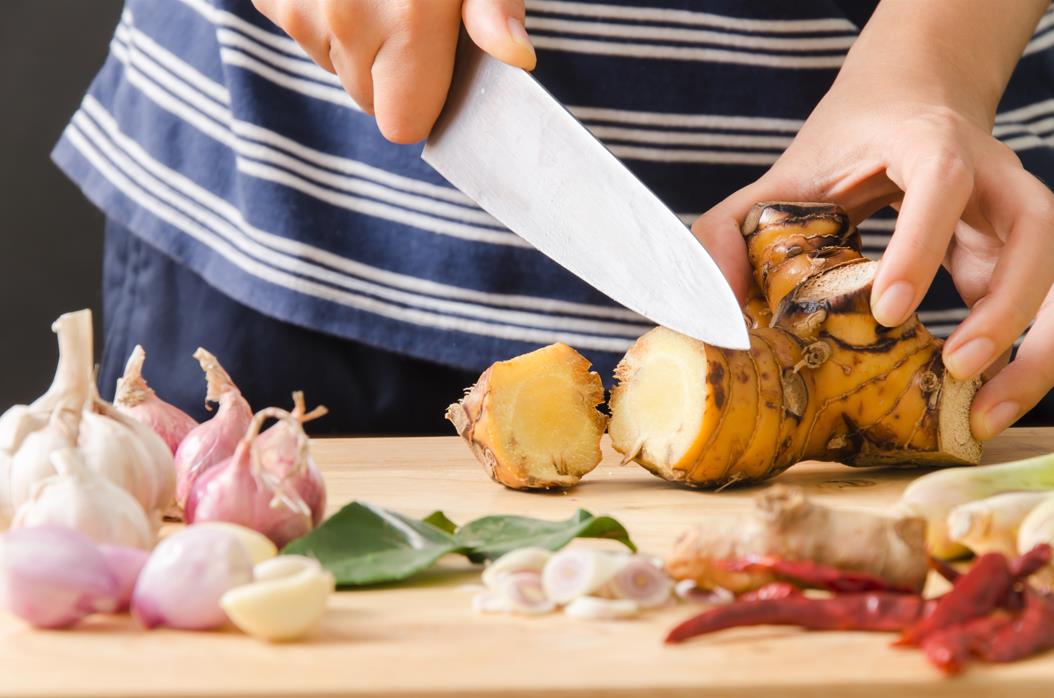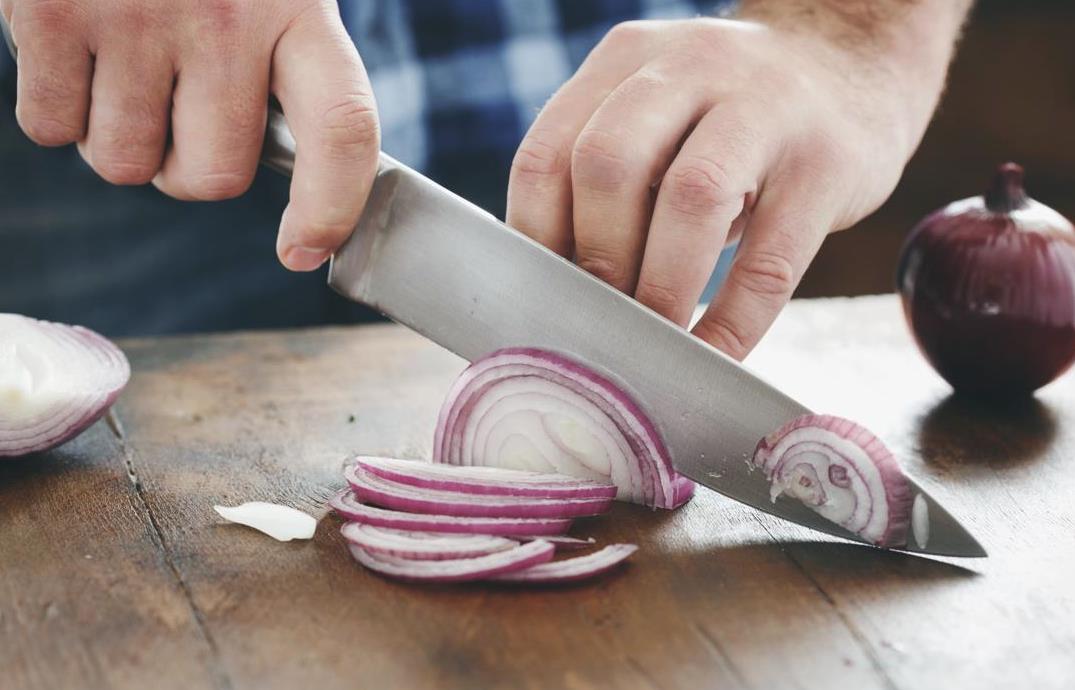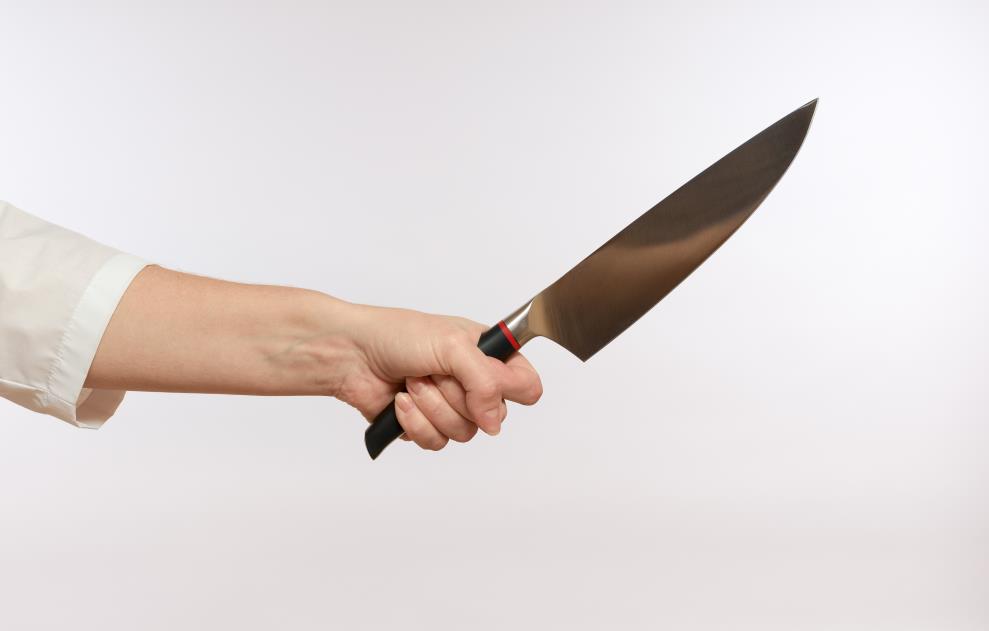When describing a high-quality chef knife, we often think of precision, durability, power, and comfort. Most will consider the design material, the handle’s weight, feel, and the blade’s strength. Unfortunately, we often overlook an important factor: size. Chefs with bigger hands can always get away with a big knife, but what about those with smaller hands?
The best chef knife for small hands should provide a comfortable grip, ensure precise control, and fit firmly between your index finger and thumb. It’s not necessarily the shortest or lightest, but it should be smaller than the average chef knife. The blade should also be relatively thinner and the weight well-balanced so that it doesn’t fatigue your hand during extended use.
While you can use a bigger knife with small hands, it’s not always ideal. A big knife will feel unwieldy, and you will likely sacrifice precision and control. This article details how to choose the perfect length for your knife and test it to get the best fit. We also recommend our utility chef knife, which is smaller but still packs a punch in performance.
Table of contents
How to choose the length of a chef knife

There’s no one-size-fits-all answer to choosing the perfect chef knife length. It ultimately depends on your hand size, grip preference, cutting preference, and the knife’s intended use. However, a good rule of thumb is choosing a knife with a blade about the same length as your arm.
Chef knives measure anywhere from 6–14 inches and two parts make up the length: the blade and the handle.
If you have small hands, you’ll want a shorter blade length so that the knife feels more manageable. The handle should also be shorter and more slender to fit comfortably in your hand.
Usually, we categorize chef knives as either short or long. While these terms are relative, a short knife typically measures 6–8 inches, whereas a long knife is 8–14 inches. The perfect chef knife size for you is the one that feels right in your hand and allows you to execute all your cutting tasks with ease.
How to test knife length
If you’re shopping online, double-check the product specs. In a physical store, it will require a little more effort on your part. The best way to test the length is to use the forearm test for knife length:
Bend your elbow to a 90-degree angle and hold your forearm horizontally in front of you, parallel to the ground. Use your other hand to position the knife such that the blade’s heel rests on the wrist and the tip of the blade extends to the joint of your bent elbow.
- If the blade is the same length as your forearm, it’s a perfect size.
- Suppose the blade is too long. In that case, it will extend beyond the joint of your elbow, making it difficult to control and maneuver.
- If the blade stops before reaching the joint of your elbow, it’s too short. A shorter blade will limit your cutting range and may not be suitable for all tasks.
When testing the blade length, make sure to also consider the handle. It won’t be easy to control if the knife has a long blade but a short handle. The opposite is true for a knife with a short blade and long handle—it will feel unstable and top-heavy.
Product recommendation: HDMD™ – Utility Chef Knife
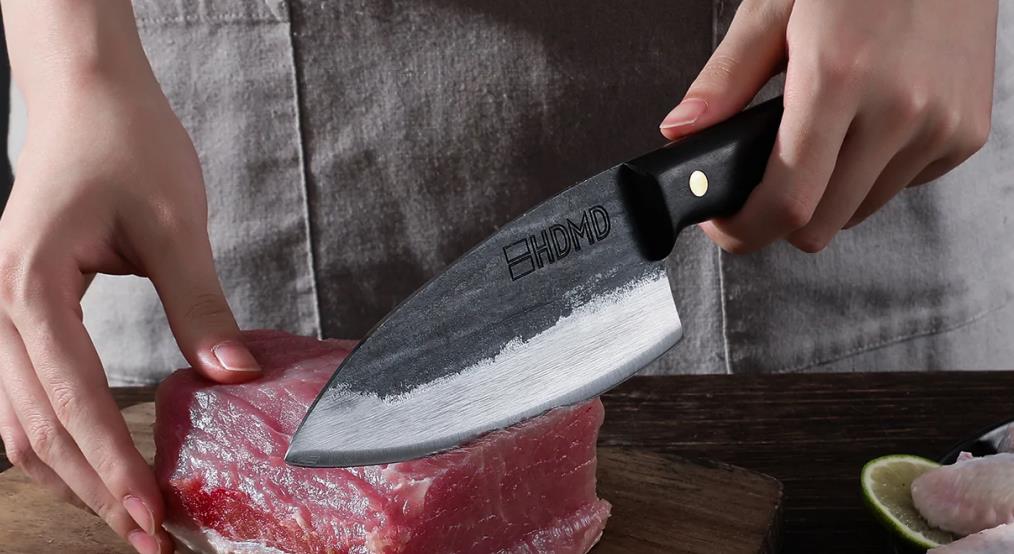
The design construction of the HDMD™ Utility Chef Knife makes it perfect for those with small hands. It measures 11 inches long, with a 6.3-inch blade, which is ideal for most chefs. The design of construction is top-notch, with a full-tang blade made of high-carbon steel.
At first glance, you’ll notice the beautiful black pakkawood handle. Not only is it comfortable to grip, but it also provides excellent control. If you’re looking for a high-quality, all-purpose knife that won’t break the bank, the HDMD™ Utility Chef Knife is the perfect option.
Main features
- High carbon steel blade
- Full tang construction
- Pakkawood handle material
- Total length: 11 inches (Blade length 6.3 inches, Handle 4.7 inches)
Pros
- Lightweight design makes it easy to handle
- The high carbon steel holds its edge longer than other types of steel
- Flexible and easier to carry around
- It’s relatively cheap ($79.00)
Cons
- High carbon steel demands more care, i.e., scouring after every use
- Susceptible to chipping upon heavy impact
Buyers’ guide
Below is a detailed buyers’ guide comparing a chef knife with a santoku knife.
Chef’s knife vs santoku
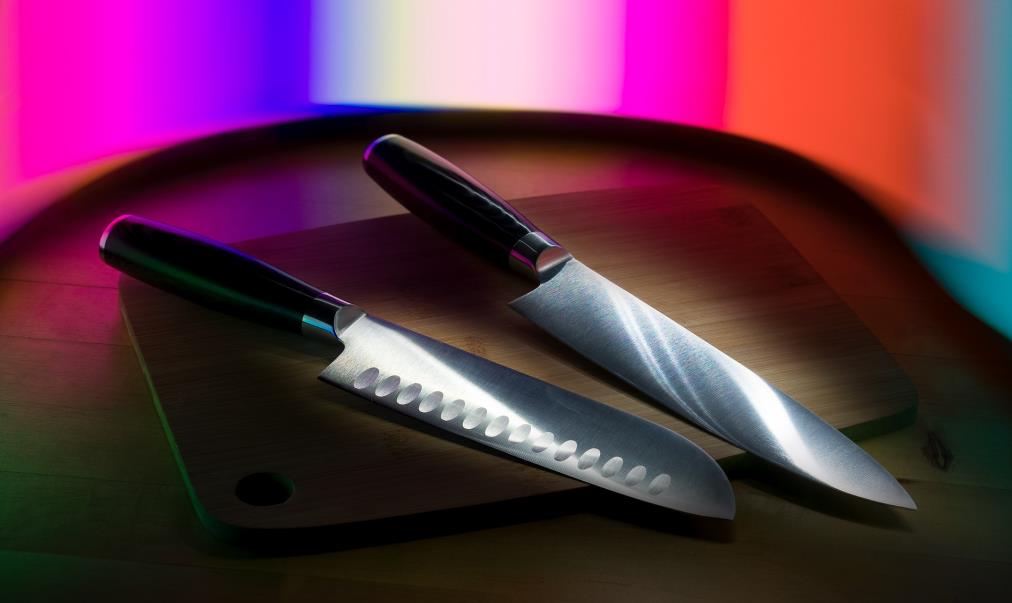
The santoku is a Japanese-style knife that shares many similarities with the chef’s knife. Both are all-purpose knives with varied uses in the kitchen. Like the chef’s knife, you can use the santoku for slicing, dicing, and mincing. Despite the similarity in functions, several differences exist between the santoku vs chef’s knife.
Usually, a chef’s knife has a curved blade that tapers upwards to a point, whereas a santoku knife has a straighter edge with a dull spine that curves down to meet the straight edge.
The differences in shape affect the cutting technique for each knife. The Santoku knife’s flat blade requires more vertical chopping motions, whereas the chef’s knife’s curved blade lets you rock the blade back and forth for a more efficient chopping motion.
Of the two knives, the Santoku better suits users with small hands because of its small size and lightweight design. On the other hand, the chef’s knife is a better option for those who want more versatility and are comfortable with a larger knife.
Handpicked for you
True cutting power in the palm of your hand
Things to consider when buying knives for small hands
When choosing a knife for small hands, several factors come into play. Below are some key considerations:
Blade length
The ideal blade length for a chef knife is one that feels comfortable and allows for a full range of motion. The degree to which we can measure how small a hand varies, so it’s important to try out different sizes before making a decision.
The best way to find the right size is to use the forearm test described above. Ideally, the blade should be no longer than the distance from your elbow to the base of your palm or fall short of it.
Grip size

A comfortable grip is vital, regardless of the size of your hand. A good grip will allow you to apply even pressure when cutting, resulting in cleaner cuts. Consider a relatively thinner grip if you have small hands. The last thing you want is a knife that feels too big and bulky.
Balance
A balanced knife should feel comfortable and natural in your hand. A well-balanced knife will feel like an extension of your arm, making it easy to control. When testing knives, pay attention to how they feel in your hand. If the blade feels too heavy or unbalanced, it’s likely not the right knife for you.
While there’s no perfect knife balance point, a good rule of thumb is to find where the blade and handle are roughly the same weight. Users with small hands may find it easier to control a slightly blade-heavy knife.
Handle length
There’s no perfect ratio for blade-to-handle size. Previously, the general rule was that the handle should be about the same length as the blade. However, this isn’t always practical, especially for small hands.
A shorter handle may be more comfortable and allow for greater control. However, it’s important to find a balance between comfort and control.
FAQs
What is a Serbian chef knife?
A Serbian chef knife features design elements from a Santoku, precisely the curved spine and flat edge, and that of the cleaver, given its broad and heavy blade. The knife is versatile with many different uses such as slicing, dicing, and mincing.
What is a smaller version of a chef knife?
A paring knife is a typical smaller version of a chef knife. It is a general-purpose kitchen knife with a relatively short blade that is ideal for peeling, slicing, and mincing fruits and vegetables. The design of the paring knife typically includes a straight or slightly curved edge and a pointed tip.
Closing
Having small hands doesn’t mean you have to sacrifice quality or performance in the kitchen. There are plenty of great chef knives out there that are specifically designed for those with smaller hands.
Some factors to consider when choosing the best chef knife for small hands include blade length, weight, and handle size. Be sure to select a knife that is comfortable for you to hold and use so that you can prepare meals with ease.
Visit our store for a discount on our HDMD branded utility knife and other top-quality kitchen tools. You can also visit our blog for more articles about kitchen knives and other cooking tips and tricks.







